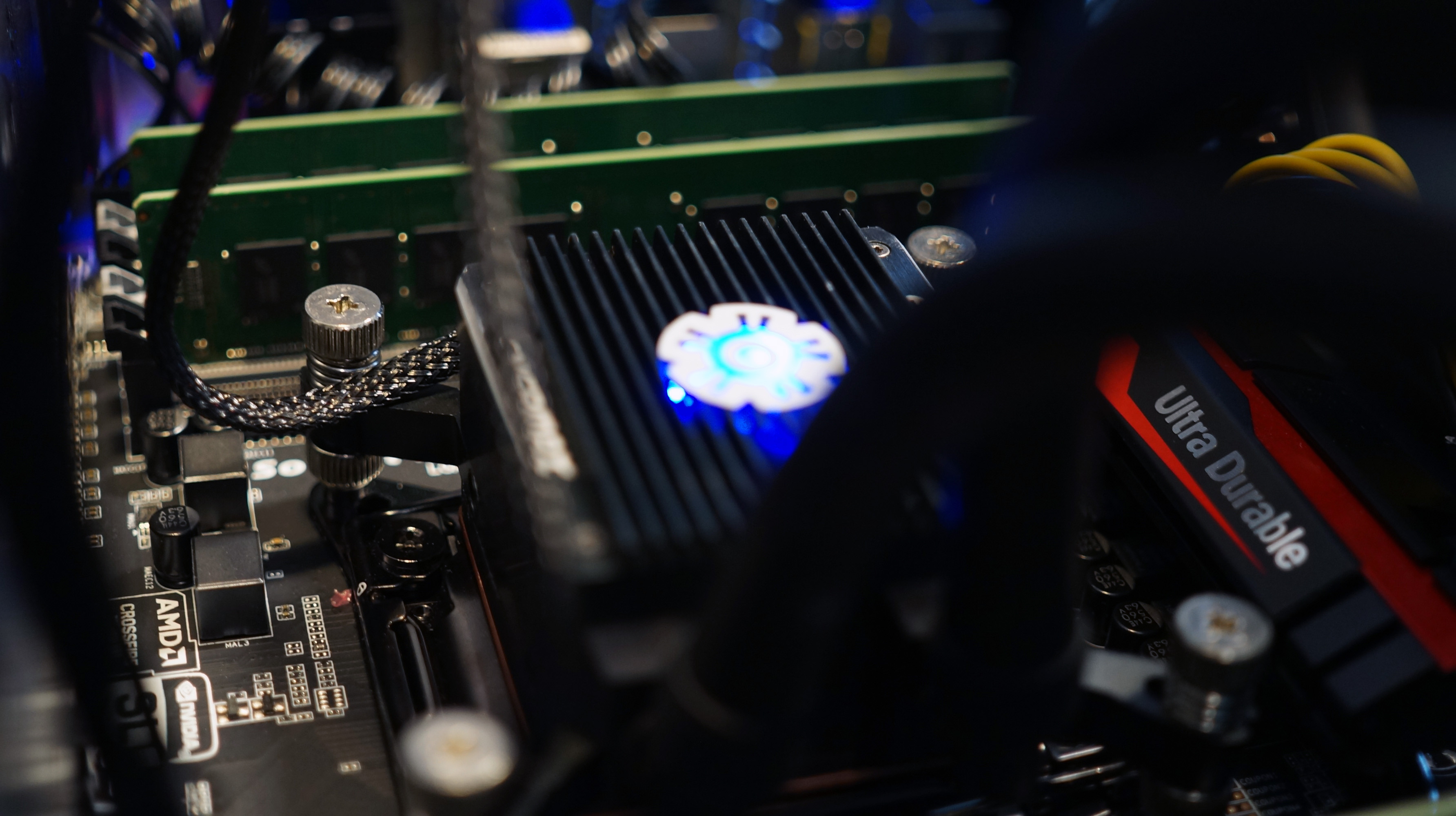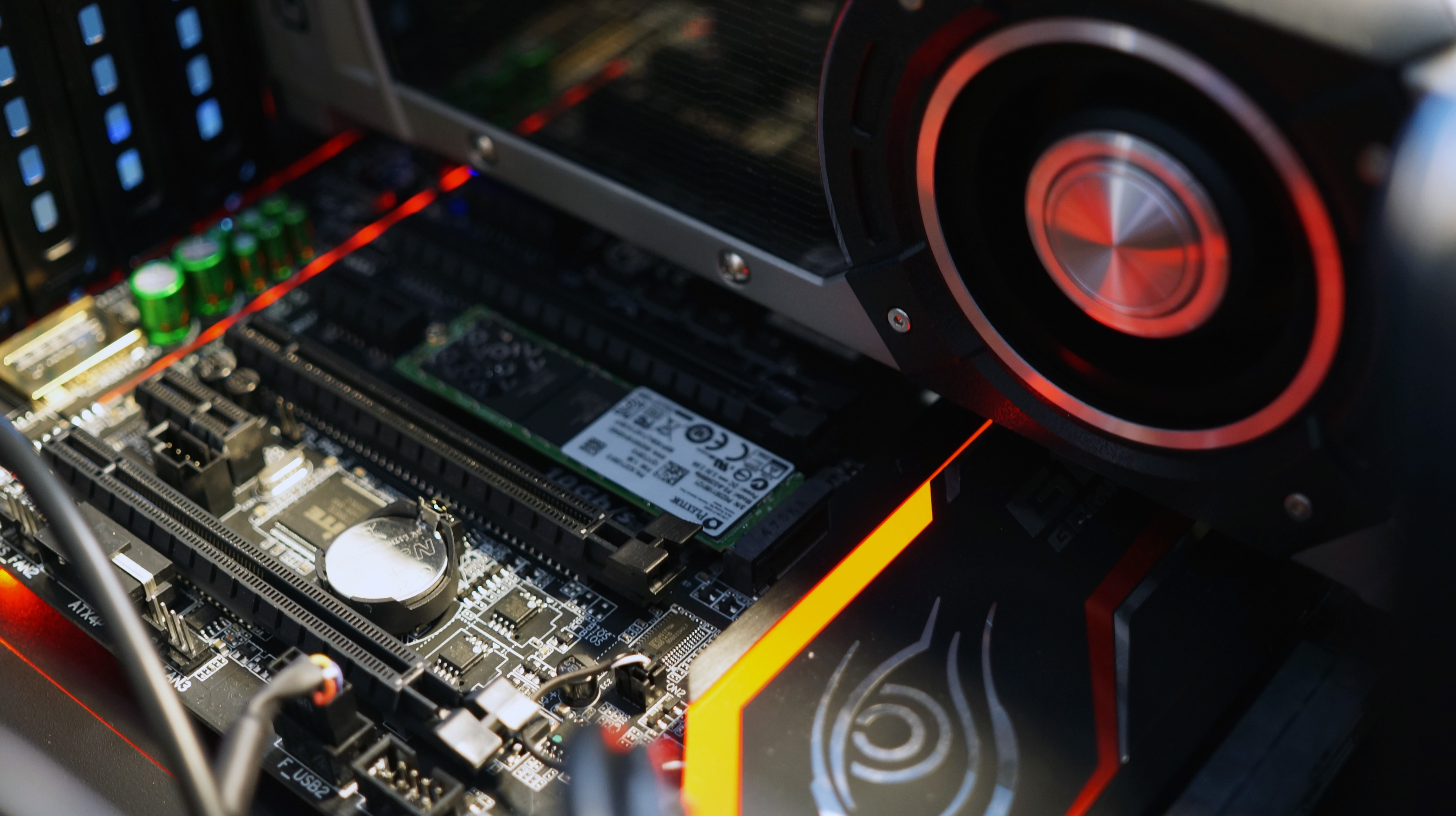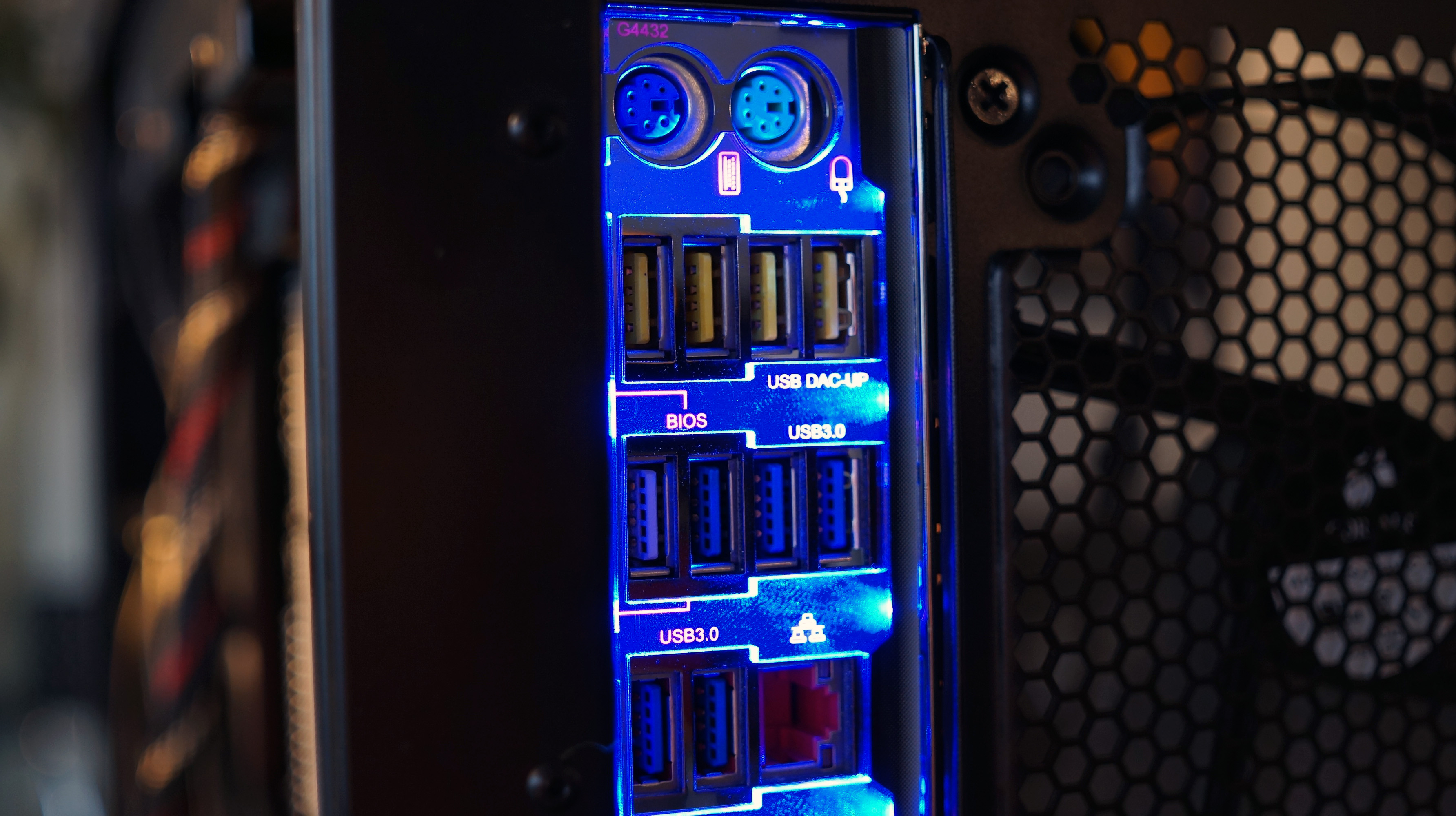Gigabyte GA-X99-Gaming 5 motherboard tested: overclocking a Haswell-E 5960X

A new generation of Intel Extreme processors with a new socket (LGA 2011-3) means a new batch of motherboards to go along with them, and Gigabyte has a whopping eight X99 boards aimed at the PC gaming elite. To test out Intel’s $1050 Core i7 5960X, Gigabyte sent me the GA-X99-Gaming 5, which sits in the middle of that eight motherboard pack. At $295, it’s a bit cheaper than a couple other variants, like the wi-fi equipped Gaming G1 Wi-Fi and the overclocking oriented SOC Force. Despite not being Gigabyte’s premiere overclocking board, I was able to clock the i7 5960X at a stable 4.1GHz on the Gaming 5, and it was an effortless process thanks to Gigabyte’s great UEFI BIOS.
After I hit 4.1GHz so easily, I had to push it even further—but more on that later.
The Gaming 5 is the first X99 board I’ve tested, and it’s interesting to see what $295 gets you for an Extreme processor motherboard. The average Z97 board costs $100 - $200, and most of the additional features on the X99 Gaming 5 come from the X99 chipset. Compared to Gigabyte’s $145 Z97X Gaming 5 motherboard, the X99 board has these big advantages:
- Support for DDR4 rather than DDR3 RAM.
- Two x16 PCI Express slots at x16 and two PCI Express slots at x8, compared to one PCI Express slot at x16, one at x8 and one at x4. The extra slots are made possible by more PCIe lanes on the Extreme CPUs.
- Four additional SATA 6 Gb/s ports from the chipset.
- Two additional USB 3.0 ports from the chipset.
Otherwise, the two motherboards are extremely similar. The most important feature with X99 is the extra PCIe slot and the added bandwidth available to PCIe devices, which enables quad-SLI or Crossfire if you have a suitable number of graphics cards on hand. But Gigabyte’s added some smart touches here and there that make the X99 motherboard pleasant to use, both in terms of hardware and software. Let’s dive in.
Hardware overview
To test the Gigabyte-X99-Gaming 5, I built a system with the following components:
- Corsair 750D full tower case
- Gigabyte-X99-Gaming 5 motherboard
- Intel 5970X processor
- Enermax Liqtech 240 closed-loop liquid CPU cooler
- 32GB Crucial DDR4-2133 RAM
- Plextor 256GB m.2 SSD
- Enermax 1500 watt power supply
- Nvidia GeForce GTX 980 reference graphics card
First, the important features: the board’s four PCIe slots can support up to four graphics cards, while many other motherboards only support up to three-way SLI. Four-way only works with a CPU that has enough PCIe lanes to communicate with that many devices. The 5960X and 5930K both have 40 PCIe lanes, enough to support four graphics cards. The 5920K processor, however, has only 28 lanes, which means it can only support three-way SLI or CrossFire.
The X99 Gaming 5 also has a dual M.2 slot for an SSD and a Wi-Fi card. The M.2 socket isn't the fastest around—it tops out at 10 gigabits per second, whereas both ASUS and Asrock make X99 motherboards that use a PCIe x4 lane to achieve up to 32 gigabit per second data speeds. The latter method shares bandwidth with one of the PCIe sockets, which is a deal-breaker if you plan on running four-way SLI; the boards can serve the M.2 socket or the PCIe lane, but not both. Gigabyte's implementation, while definitely slower, doesn't have that limitation.
The biggest gaming news, reviews and hardware deals
Keep up to date with the most important stories and the best deals, as picked by the PC Gamer team.

10 gigabits per second works out to 1250 megabytes. Because the Plextor M.2 SSD I’m using has max speeds of about 770 MB/s, I didn’t have any bottleneck issues. But there are SSDs out there right now butting up against that speed limit, which could make Gigabyte's M.2. implementation a limiting factor in a year or two.
Gigabyte’s motherboard has a few interesting extra features: a header for an add-in Thunderbolt card, an upgradable OP-AMP that audiophiles may choose to change out instead of installing a separate sound card, and ambient LED lighting around the board and I/O ports. I was surprised to find that the LED lighting was my favorite bit. On the board itself there’s a bit of red LED trim that lights up, but that has no functional purpose. The purple LED glow around the I/O ports, on the other hand, makes it much easier to read the labels around the ports, even in a well-lit office. Stuffed under a desk in a dark room, the light would be wonderfully useful.

It’s the thoughtful kind of user experience refinement computer cases have been getting for years, like sliding HDD trays, that make building or using a PC a more pleasant experience. I wish Gigabyte had given the Gaming 5 the same kind of care on the body of the board itself—it’s noticeably lacking an on-board POST code display, power button, or reset button, which are nice features to have on a high-end motherboard. I don’t think that’s unreasonable to expect from a $300 board, but you’ll have to upgrade to the $350 SOC Force X99 board to get those from Gigabyte.
On the next page: UEFI, overclocking, and wrapping up.

Wes has been covering games and hardware for more than 10 years, first at tech sites like The Wirecutter and Tested before joining the PC Gamer team in 2014. Wes plays a little bit of everything, but he'll always jump at the chance to cover emulation and Japanese games.
When he's not obsessively optimizing and re-optimizing a tangle of conveyor belts in Satisfactory (it's really becoming a problem), he's probably playing a 20-year-old Final Fantasy or some opaque ASCII roguelike. With a focus on writing and editing features, he seeks out personal stories and in-depth histories from the corners of PC gaming and its niche communities. 50% pizza by volume (deep dish, to be specific).

